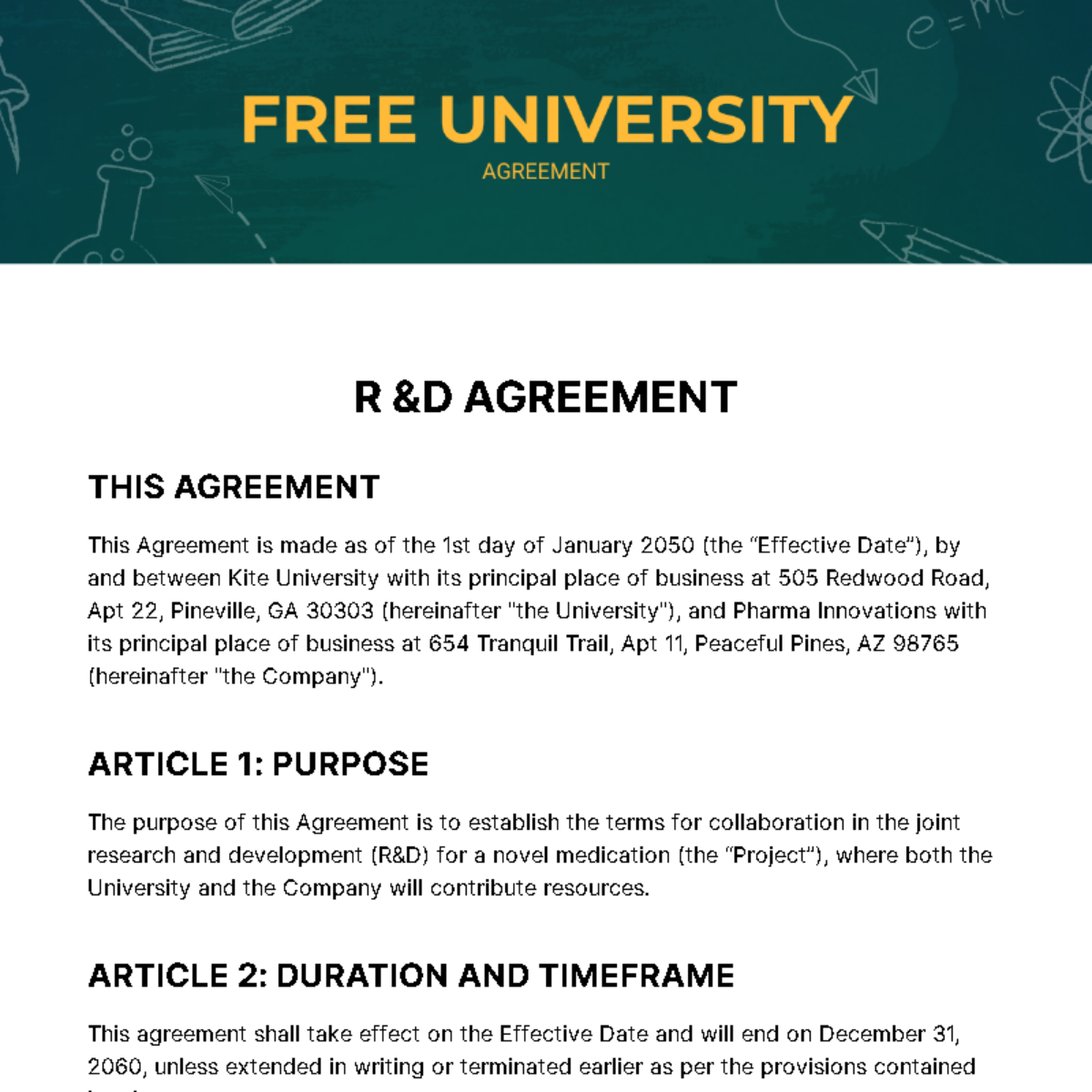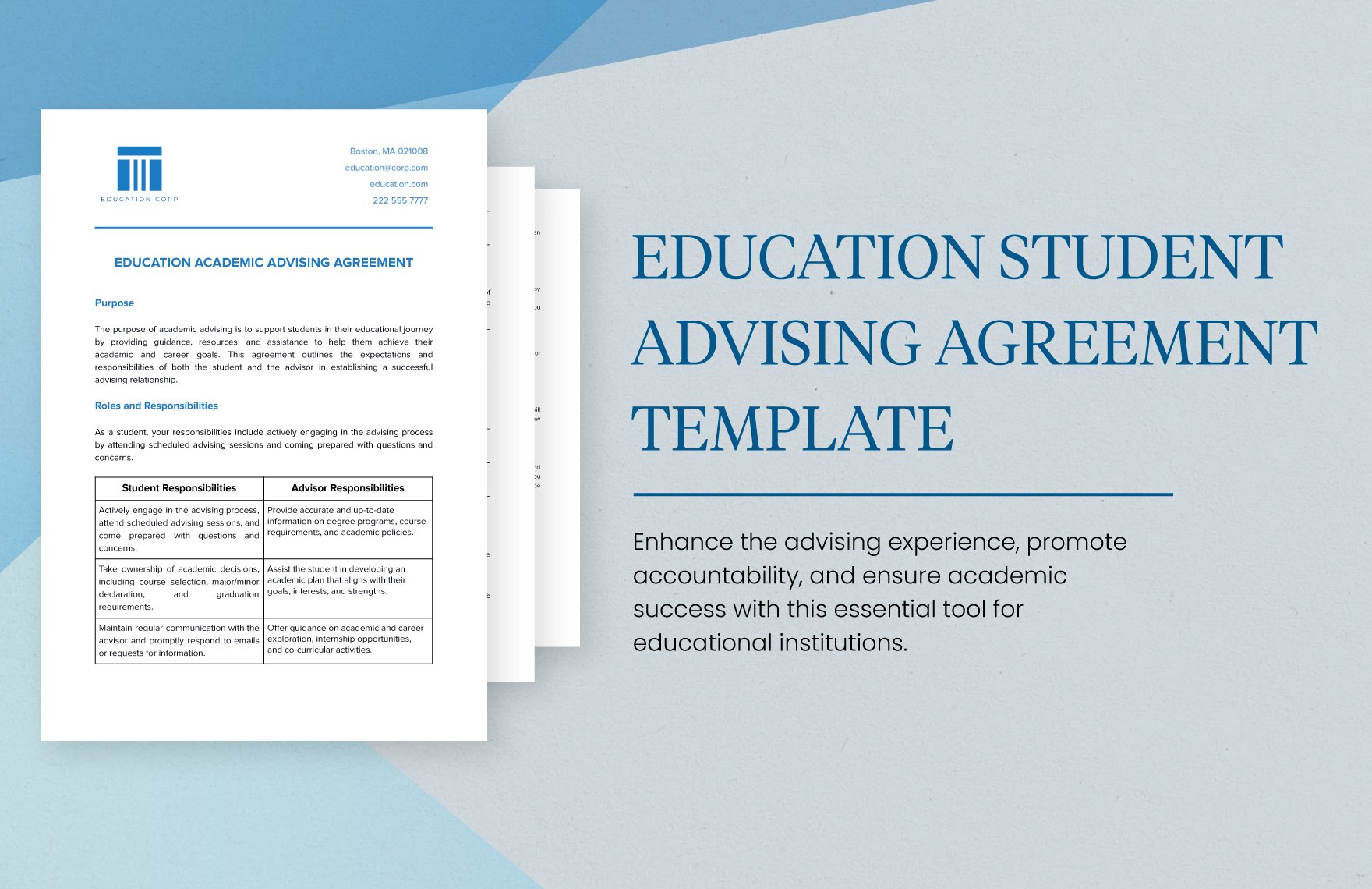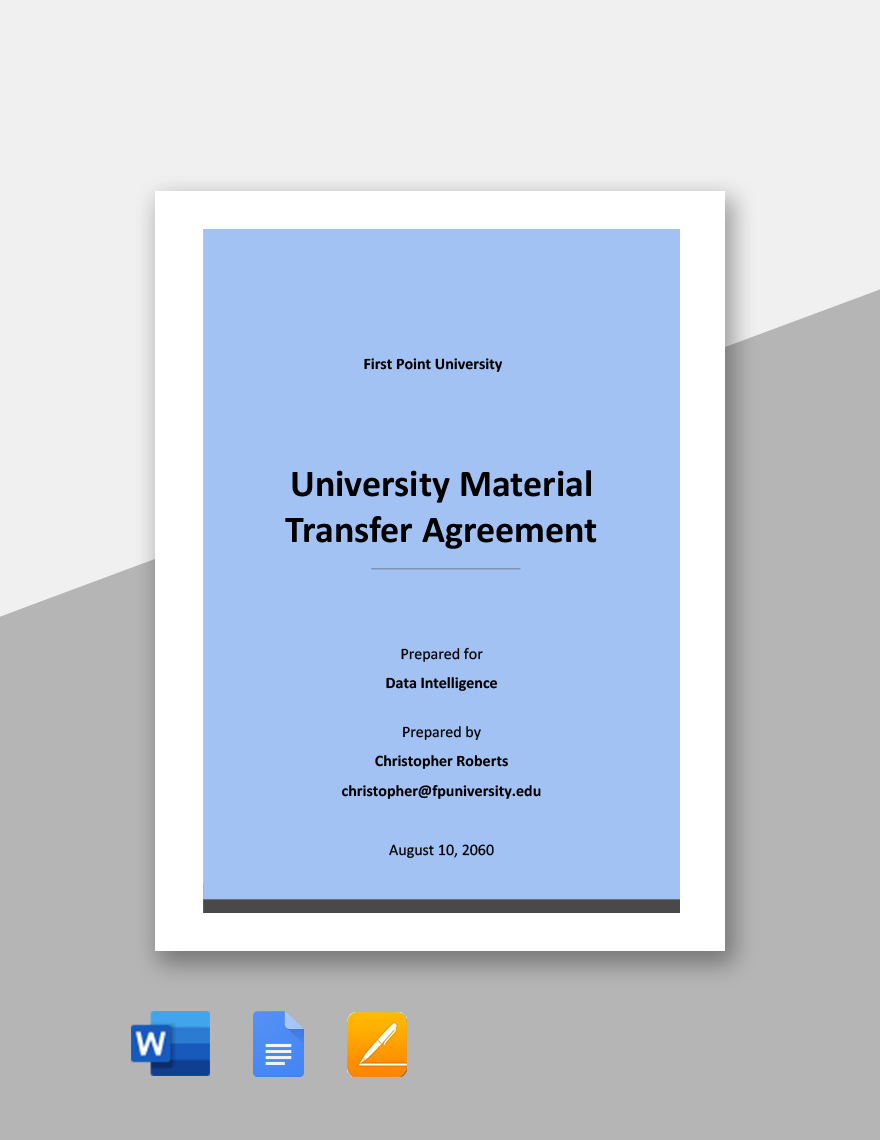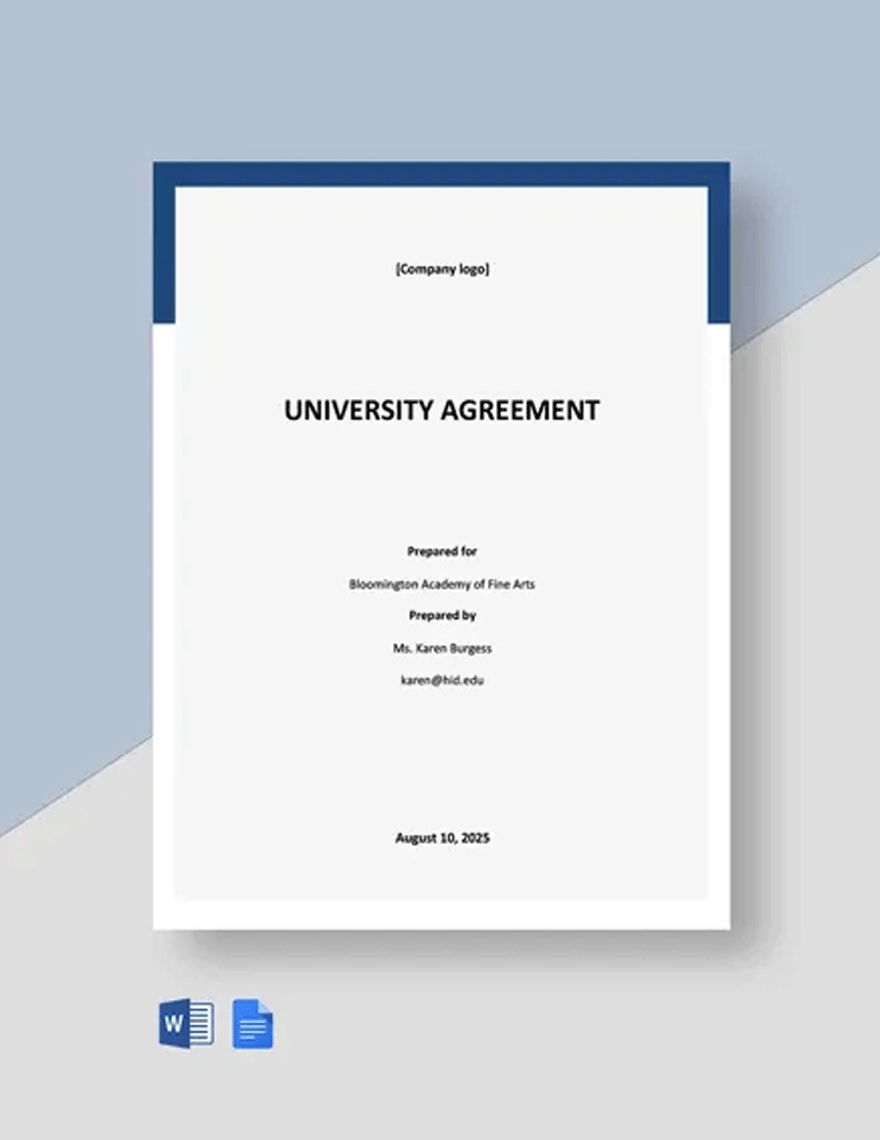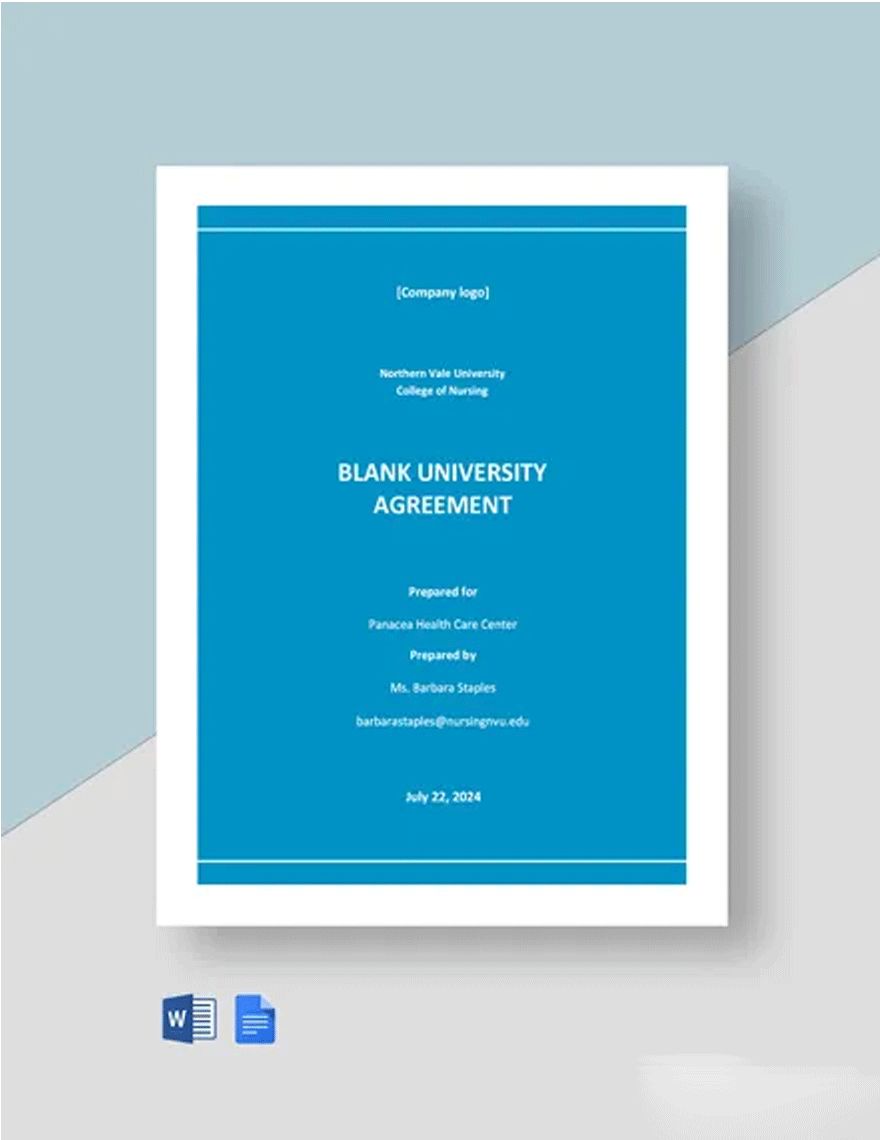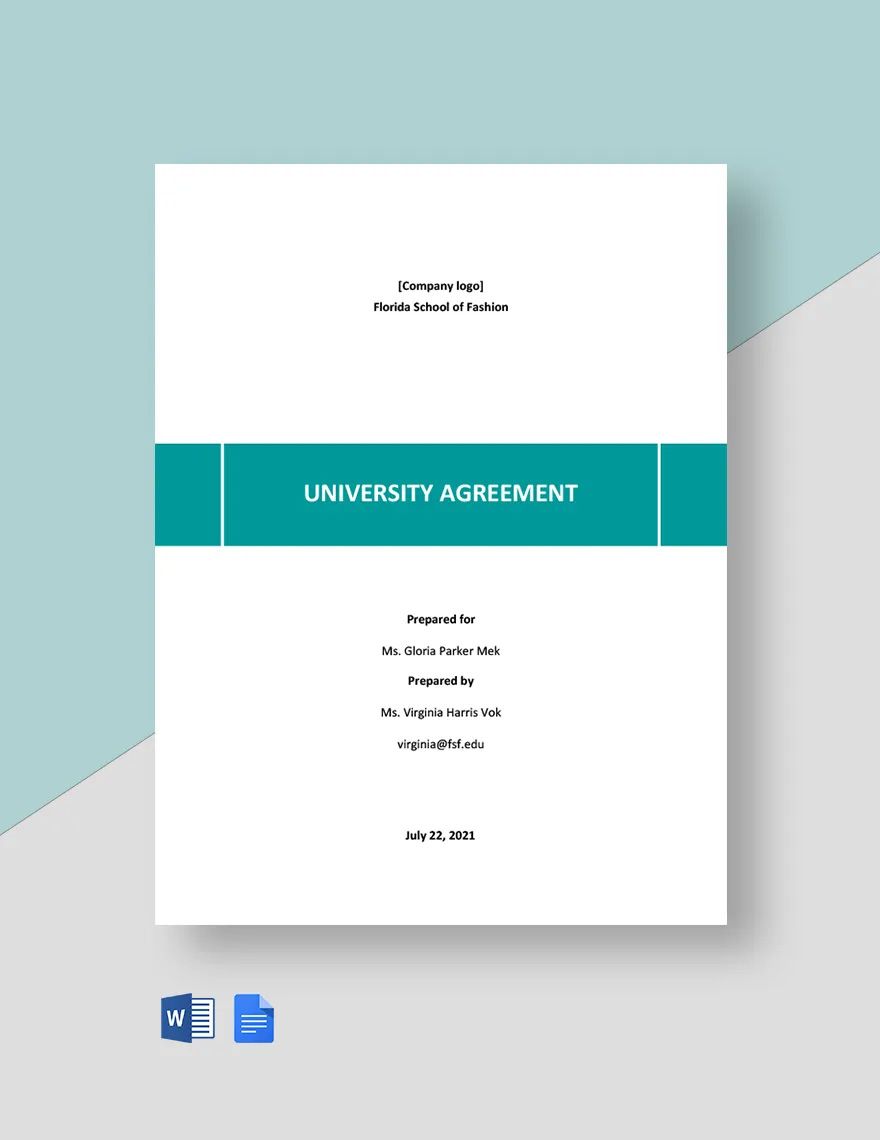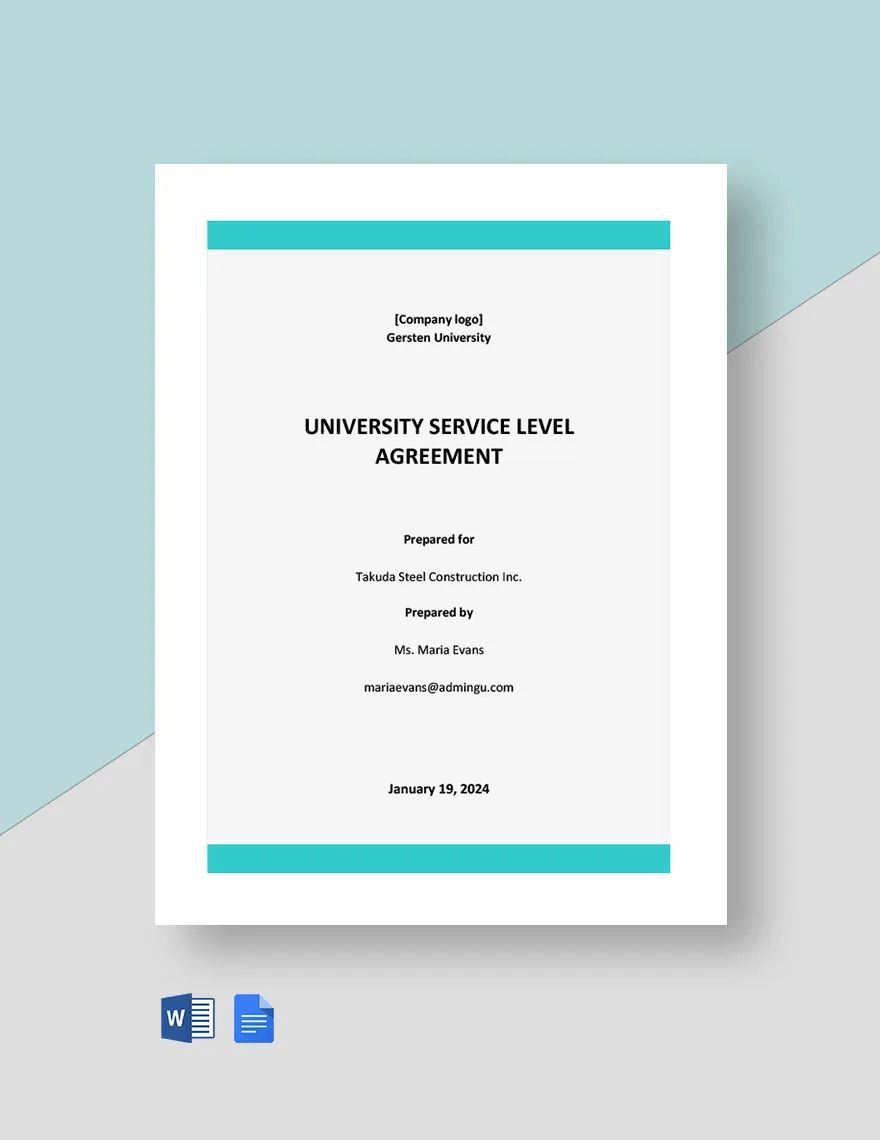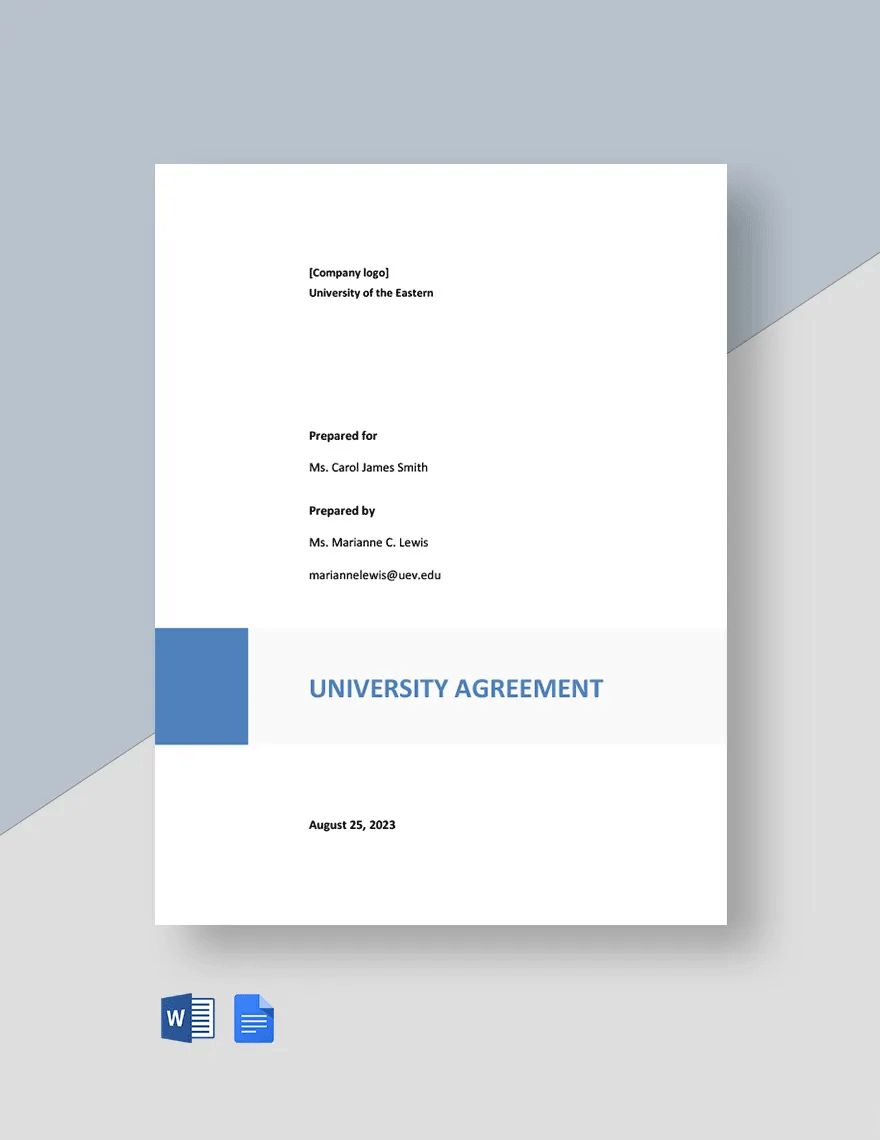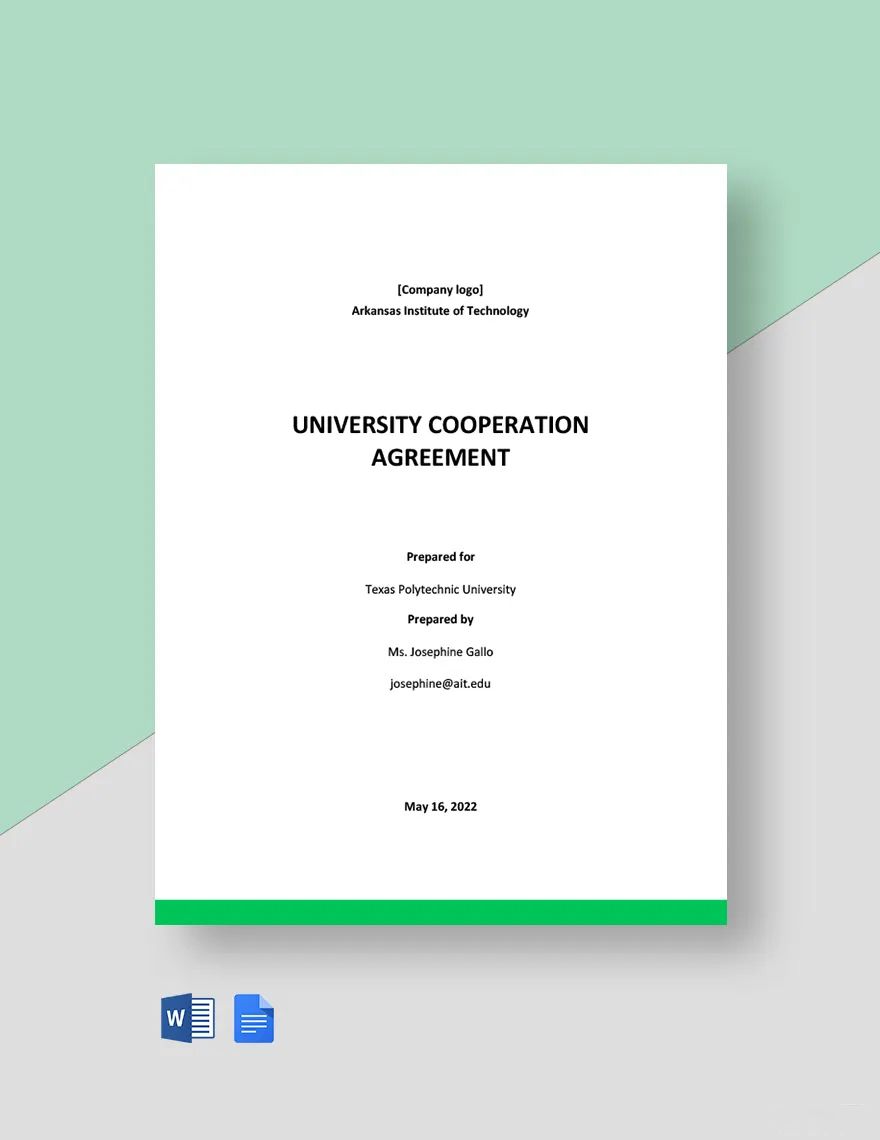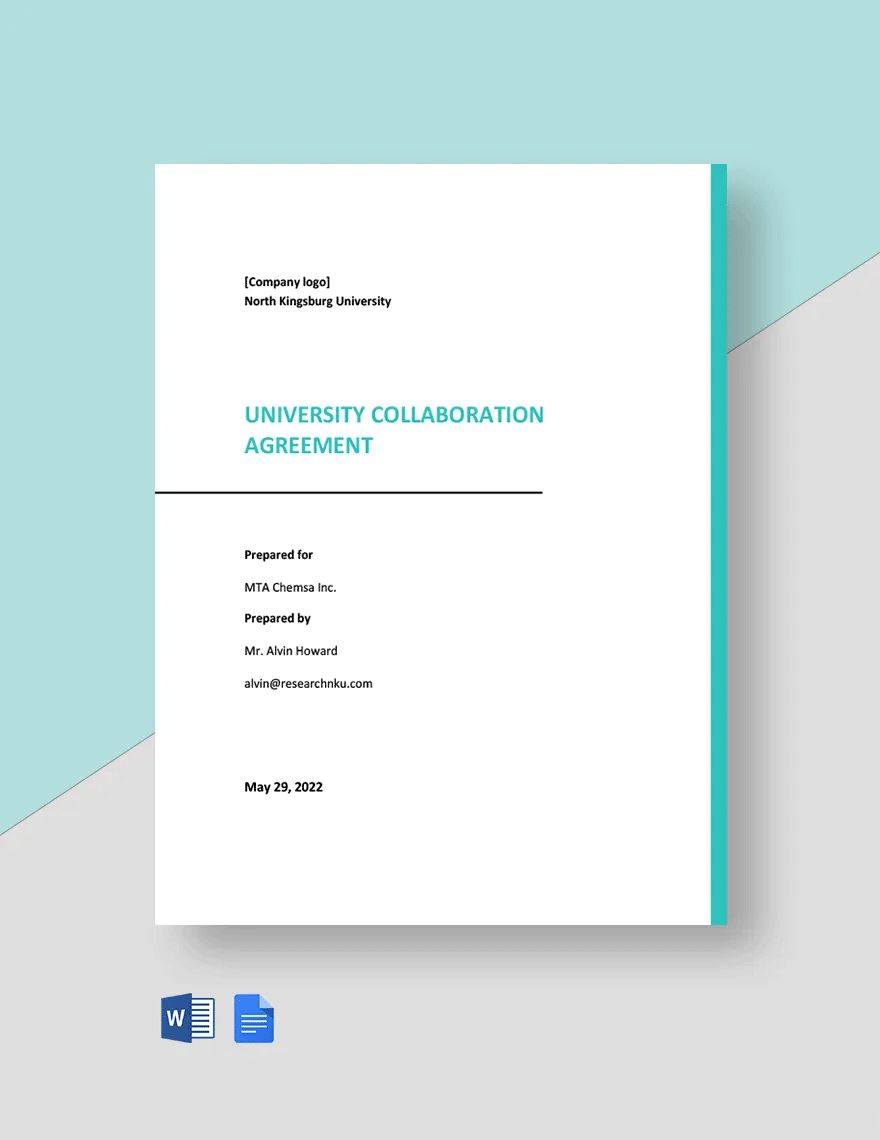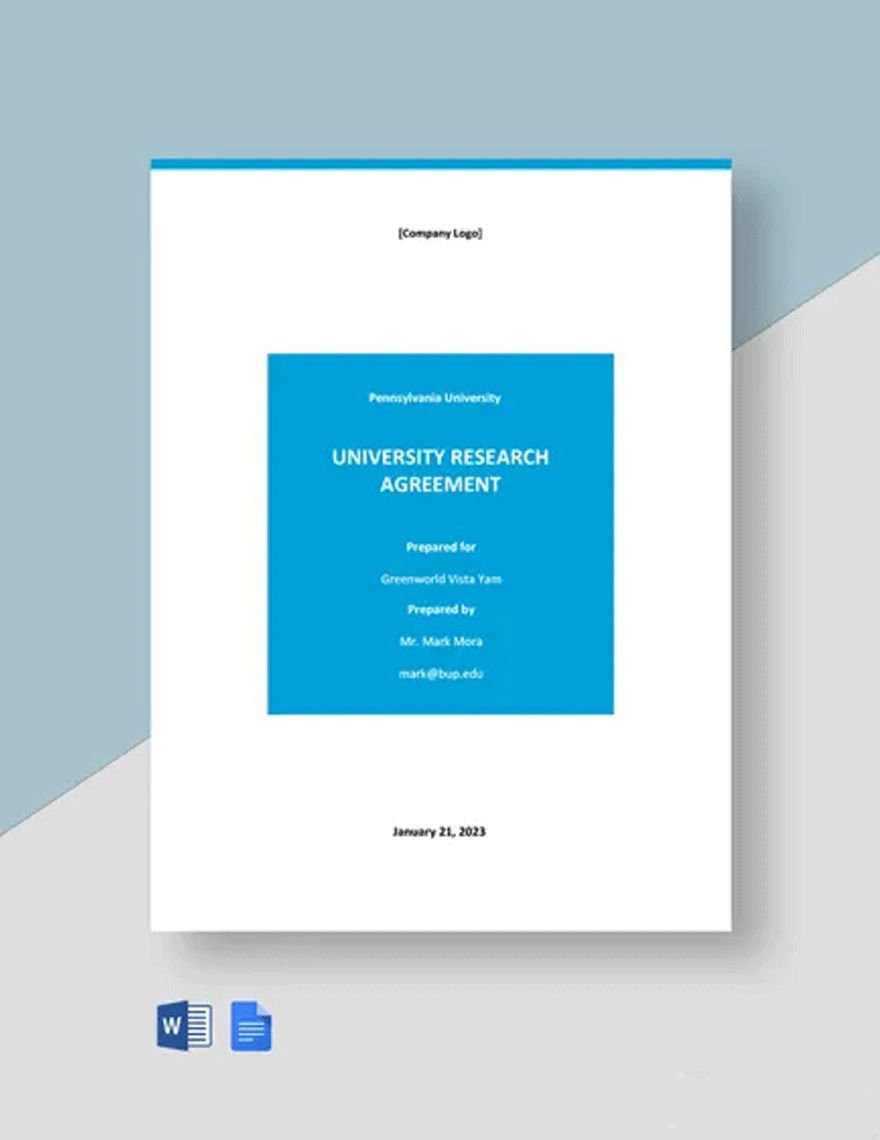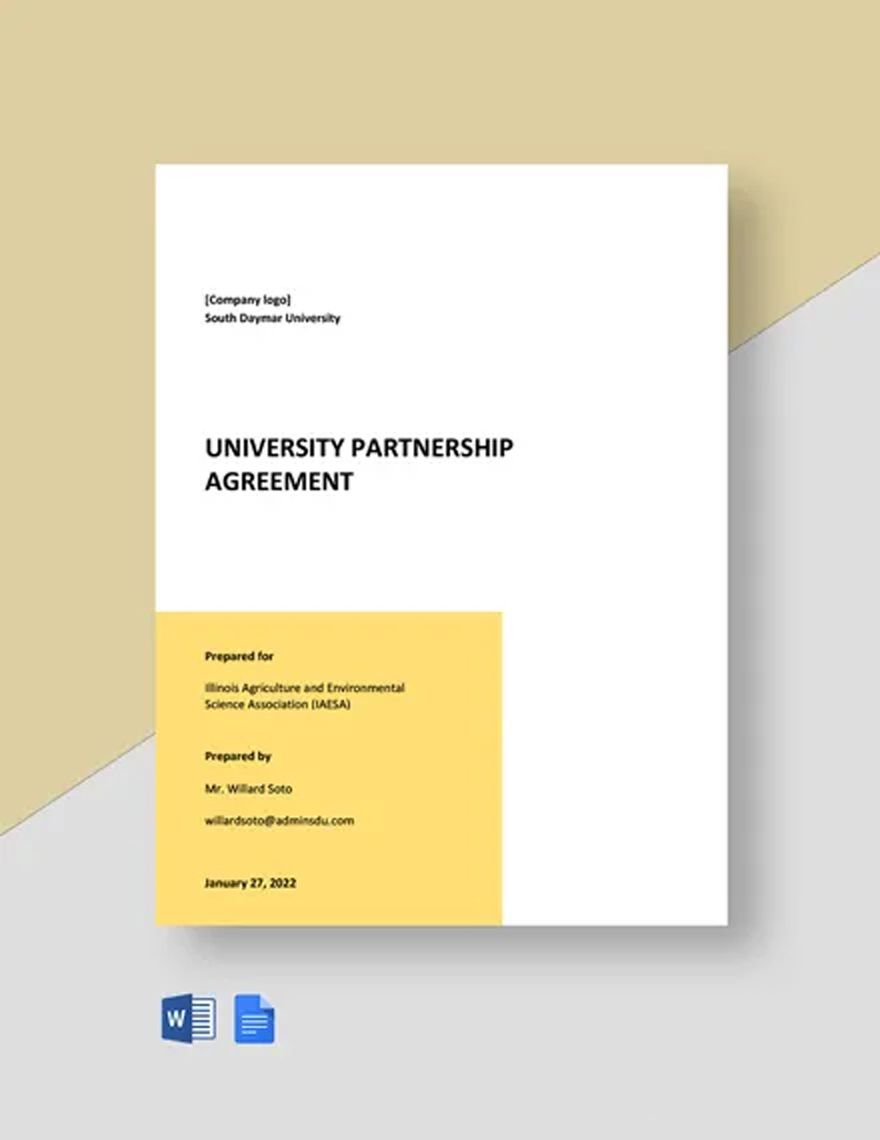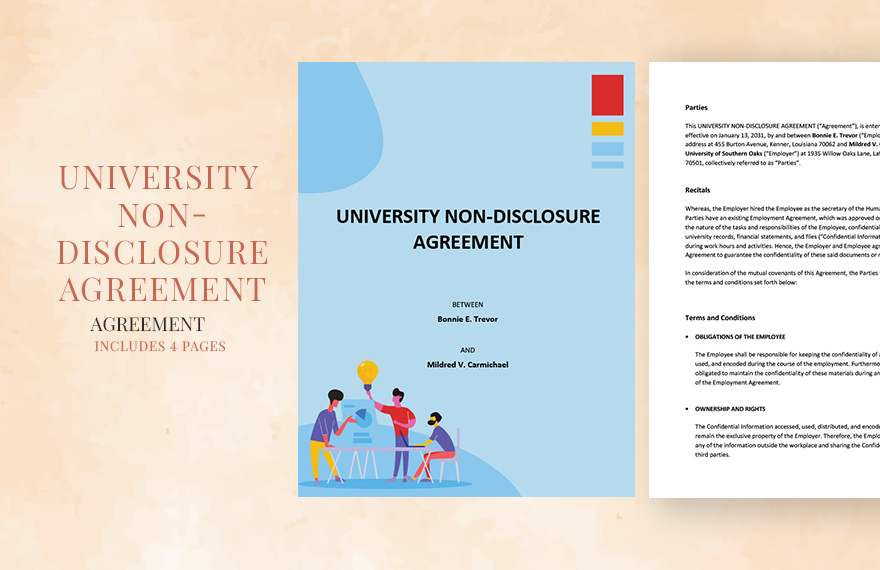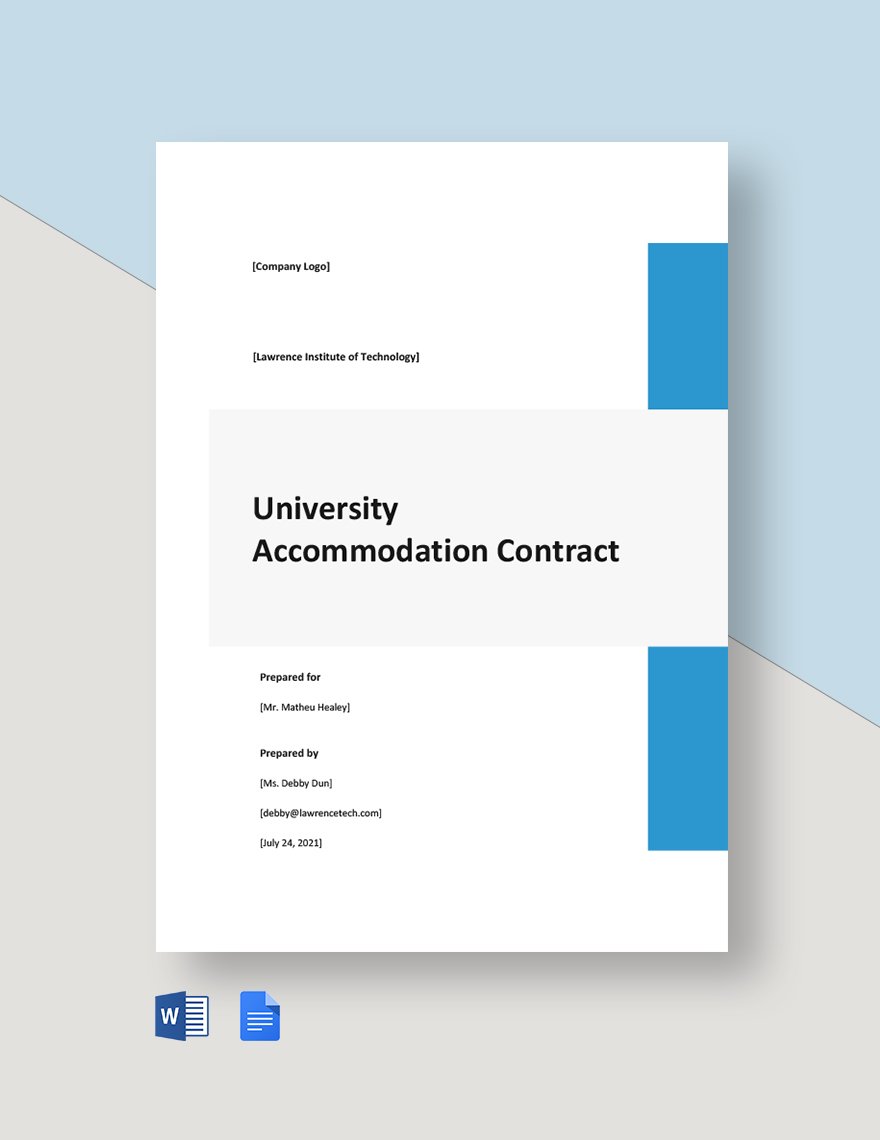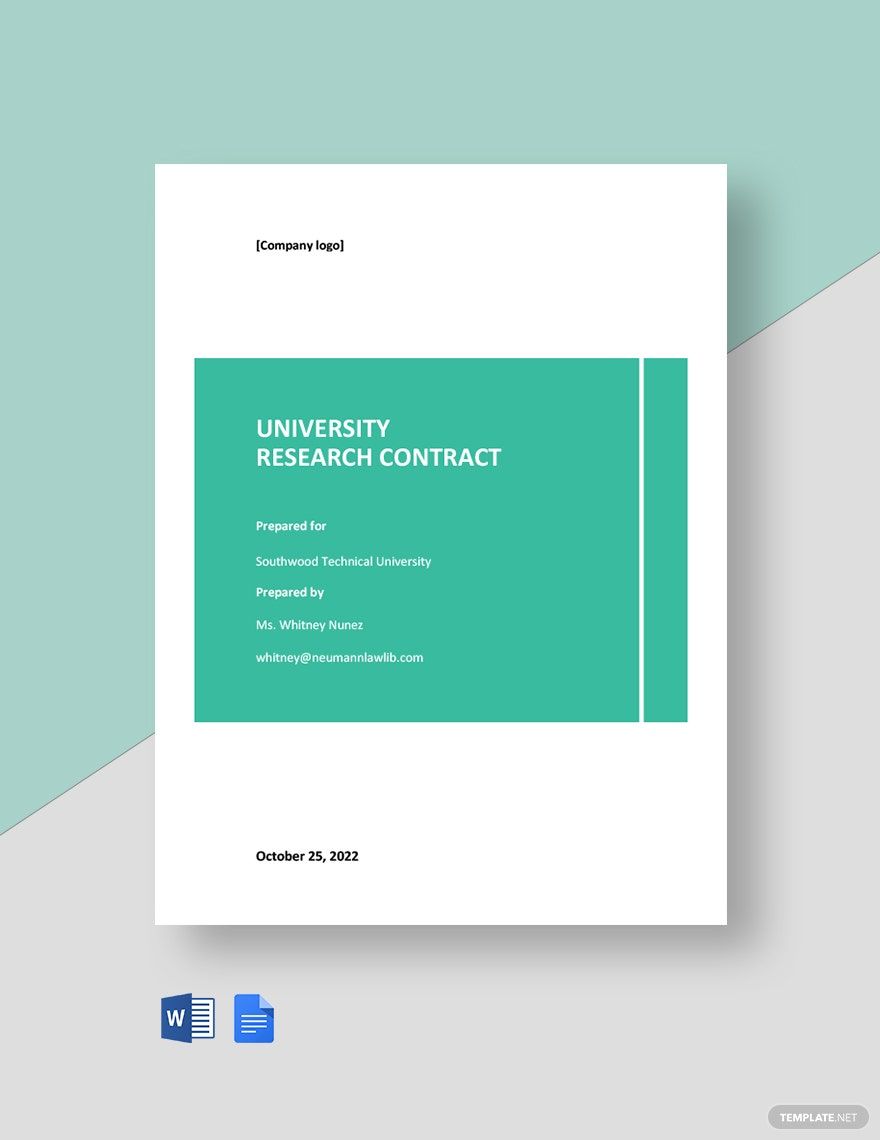Make Your Contractual Processes Seamless with University Agreement Templates from Template.net.
Bring your administrative tasks to life with University Agreement Templates from Template.net. Designed for university administrators and legal staff, these templates help keep your department organized, ensure compliance across various agreements, and save valuable time. Whether you're crafting an affiliation agreement with a partner institution or detailing terms for research collaboration, these templates provide a sturdy foundation. Each template is complete with crucial placeholders for dates, parties involved, and detailed terms, making it easier to set up your document efficiently. With no legal jargon barrier required, these professional-grade designs are accessible for everyone, ensuring your agreements are solid and comprehensive. All templates are customizable, whether you’re prepping for digital sharing or ready to print.
Discover the many University Agreement Templates we have on hand to streamline your office work. Start by selecting a template that suits your specific category of agreement, then easily swap in assets such as logos or adjust the fields to meet your university's branding standards. Add advanced touches with drag-and-drop icons or graphics, and enhance your text with AI-powered tools that offer drafting suggestions. The possibilities are endless and skill-free, allowing you to confidently create professional-looking documents. Our regularly updated templates ensure you always have access to the latest designs. Once your agreement is finalized, you can download or share it via a link, email, or print, making distribution effortless and ensuring everyone stays informed on terms.
